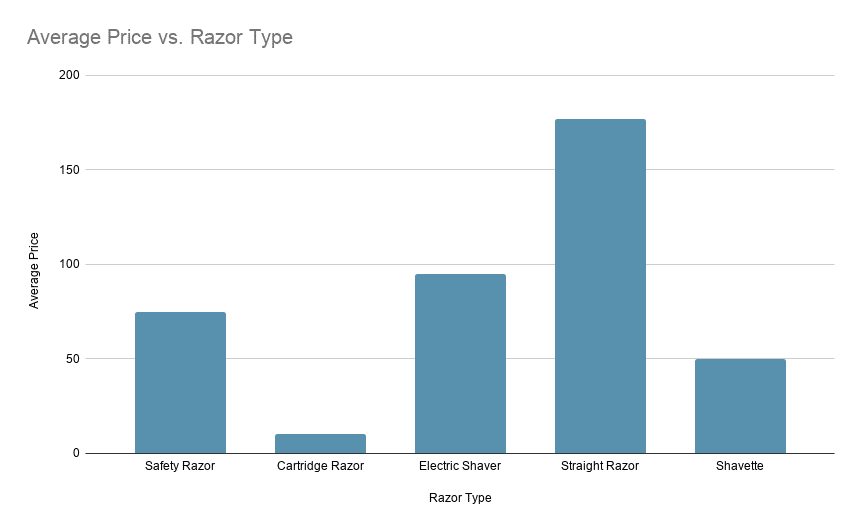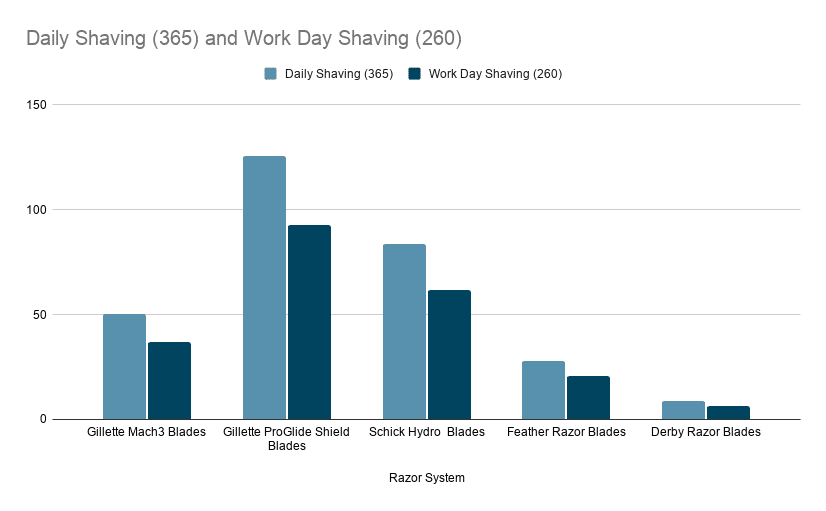Introduced over 100 years ago, the safety razor continues to be an economical alternative to modern razors.
However, when deciding on one, there is a lot to consider.
Some of the most common questions I get from men are the following:
- What are the benefits of a safety razor?
- Is a safety razor right for me?
- Will a safety razor prevent razor bumps?
- Will a safety razor prevent razor burn?
- Are they really cheaper to own than a cartridge razor?
Here are 11 important facts you should know about safety razors:
1. Can a Safety Razor Help Prevent Razor Burn?
Razor burn is simply mild skin irritation due to shaving. When shaving, there are a lot of variables at play, including the following:
- Facial hair prep prior to shaving
- Facial hair length
- The direction in which you pass the razor blade
- The total number of passes made with the razor blade
- The sharpness of the blade
- The aggressiveness of the blade gap
- The pressure being applied while shaving
- Shaving cream quality
Which, let’s be honest, is too much to consider when shaving first thing in the morning.
In general, men do find that the safety razor can provide some relief from razor burn. However, blaming your current razor as the culprit may be misplaced, especially if any of the conditions listed in the bullets above are less than optimal.
Many like to think that the safety razor helped reduce razor burn when they are just rotating their blades more frequently due to lower replacement costs.
Additionally, men who often use safety razors tend to pay more attention to the technique and ancillary shaving products (i.e., shaving cream) they are using. Well-made shaving cream can increase the comfort and performance of the razor regardless of the form.
The takeaway?
A safety razor can help to reduce the chance of razor burn. Not due to its design but rather because other enhancements have been made to the shaving routine.
2. Does a Safety Razor Save You Money?
The safety razor is a budget-friendly alternative to other modern shaving tools. We recently analyzed the short and long-term costs of ownership of safety razors in this recent post.
We discovered that, on average, a safety razor handle would cost you approximately $74*:

While the initial investment for the handle may be high, safety razor blades are inexpensive. Here’s how the price of safety razor blades compares to cartridge razor blades over one year:

If you were to shave every single day, you could expect to spend no more than $28 per year for expensive Feather safety razor blades. The more affordable Derby safety razor blades will only set you back about $9 annually.
With such a low long-term cost, you can always shave with a fresh blade.
*Note: $74 is a high average for a safety razor handle. Many affordable and well-made options are available such as the Merkur 34C ($40) or Edwin Jagger DE89 ($32).
3. Do You Still Get Acne After Using a Safety Razor?
Cartridge razors depend on the hysteresis (lift-and-cut) phenomenon to provide smooth results. While the final results may be desirable, one common side effect is acne.
By relying on a single blade, safety razors don’t cut the hair as aggressively. Additionally, there is virtually no chance of natural oils, dead skin cells, or dirt being trapped or clogged between the razor blades. This fosters a more sanitary shaving environment. Due to the safety razor design, you may see a reduction in acne with continued use.
If you typically use an electric shaver, you may or may not see a decrease in acne when switching to a safety razor.
Should your electric shaver have a cleaning station, then the reduction of acne may be minimal. Cleaning stations often depend on an alcohol-based solution to sanitize the device before each use. If your electric shaver doesn’t have a cleaning station and you don’t wash the head regularly, then the safety razor may provide favorable results.
4. Will a Safety Razor Prevent Razor Bumps?
Unlike a cartridge razor, safety razors don’t lift-and-cut with each pass. This prevents the hair from being cut too low, ultimately reducing the likelihood of a razor bump occurring.
Men who have curly beards are more susceptible to razor bumps (ingrown hairs) and should consider using a safety razor.
5. Shaving Rules Still Apply with a Safety Razor
No matter the type or number of razor blades, you should always follow the basic shaving rules for close and comfortable results. When using a safety razor, you should always make the first pass with the grain of your natural beard growth.
For smoother results with a safety razor, you can also make across and against the grain passes.
Cartridge razors are designed for with the grain shaving only. This is due to the hysteresis (lift-and-cut) phenomenon which we mentioned previously. Going across or against the grain with a cartridge razor will lead to potential irritation or razor bumps.
To learn more about the shaving grain and how to map your facial hair, please refer to this guide.
6. Safety Razors Are Not as Versatile
The safety razor was designed for facial hair use only. Attempting to use a safety razor on your scalp, chest, arms, legs, or pubic region is not recommended.
That said, some folks are adventurous and get satisfactory results. Women, in particular, have found the safety razor to be an indispensable tool for leg shaving. Brands such as Merkur (24C) offer an extra-long handle (5″) for extended reach.
The primary mechanical limitation of the safety razor is that it lacks a pivoting head. This requires you to hold the razor head at the optimal 30° cutting angle at all times. This can be particularly tricky for some regions of the body.
7. The Learning Curve is Steep
Given that the safety razor head does not pivot, maintaining the optimal cutting angle when shaving is challenging but possible to learn.
Unlike a cartridge razor or electric shaver, which you can master after a few uses, you can expect that the safety razor will take a couple of weeks to master.
Expect irritation and several surface nicks for your first few shaves. Don’t get discouraged.
If there is any advice you should take away from this guide, it should be this:
Exercise restraint when using a safety razor. Don’t overapply pressure. Let the weight of the handle do the work for you.
To help shorten the learning curve, modern hybrid razors, such as the OneBlade, featuring the best of both worlds — a single cutting blade like a safety razor paired with a pivoting head like a cartridge razor.
8. Universal Blade Setting
One of the most significant advantages that safety razors enjoy is the universal blade setting. No longer are you locked into a certain company’s proprietary blade fitting. With the safety razor, you can test across many different razor blade brands from around the world.
This allows you to discover the best razor blade brand to complement your facial hair.
Men who are using a safety razor for the first time will often pick up a variety pack of blades.
With a variety pack, you have many brands to choose from without having to invest in a large package of blades from one company.
9. Safety Razor Blades Require Safe Disposal
Safety razor blades must be disposed of properly. Proper disposal not only protects yourself from accidental injury but also loved ones and sanitation workers.
In most instances, you should place used blades in a labeled and sealed sharps container and throw them out with your trash (not recycled).
Depending on where you live, local laws may state otherwise. For further information, refer to our guide on razor blade disposal.
10. Safety Razors are Not Travel Friendly
Safety razors are prohibited from being used in carry-on luggage. Therefore, you must either check your bags or buy new blades at your destination.
You can store the safety razor handles with your carry-on luggage if you must shave while on the road. Ultimately, it is probably best to just bring a disposable or cartridge razor instead.
11. Should You Use Certain Shaving Creams With a Safety Razor?
Canned gel and foam shaving creams are still compatible with safety razors. However, most men who use safety razors tend to enjoy the barbershop-like experience that they deliver.
Therefore, you will often see that men who use a safety razor like to use traditional shaving creams and soaps paired with a shaving brush – this is optional.
Regardless of the shaving tool, quality shaving cream is always a nice upgrade to the shaving routine.